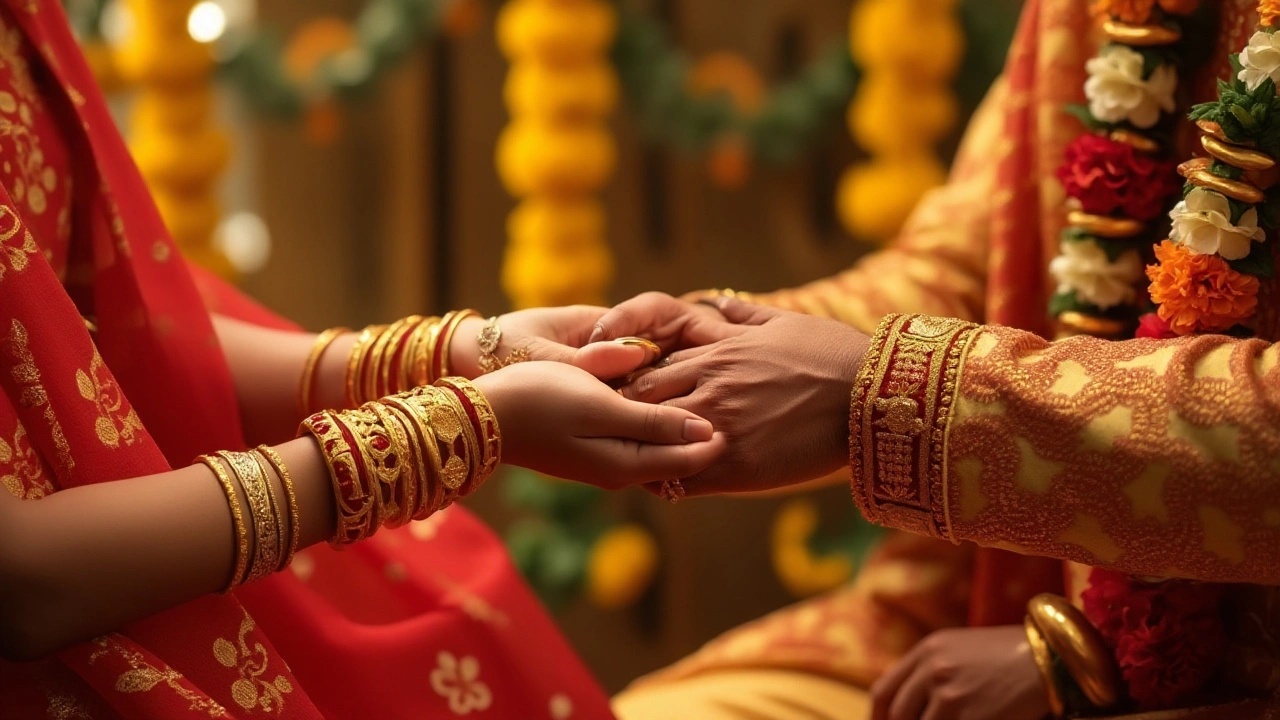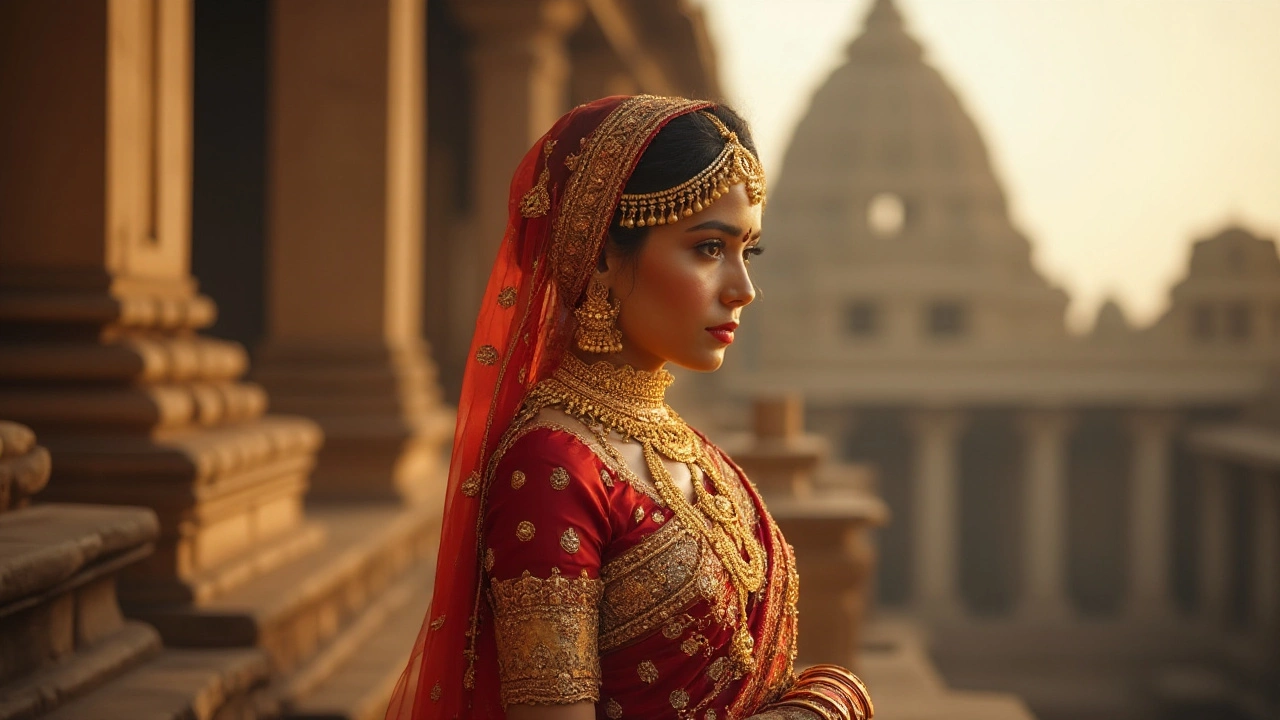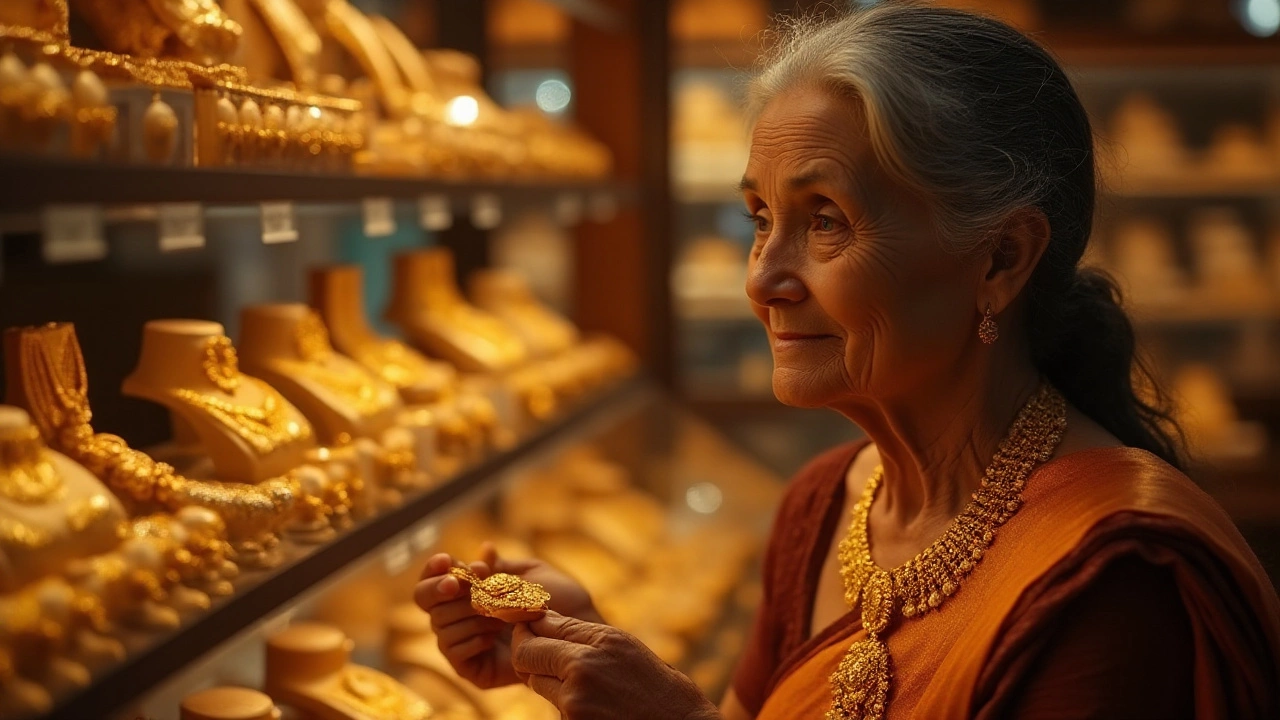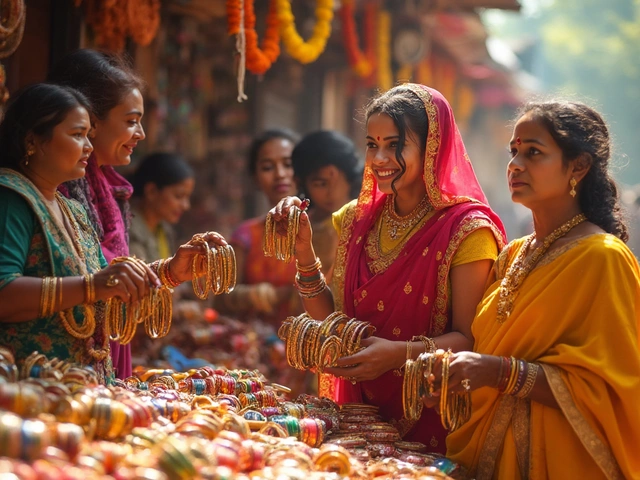Jewelry speaks a language that transcends the spoken word, whispering tales of beauty, tradition, and individual expression. Worn by many across the globe, gold jewelry captures the essence of elegance and timeless appeal. But when it comes to identifying the most worn pieces, several stalwarts consistently make the top of the list. From regal necklaces to understated bracelets, each piece adds its own charm and significance to the wearer's attire.
Understanding why these gold treasures remain perpetually popular involves exploring their cultural roots, style adaptations, and personal connections. Join us on this fascinating journey as we uncover the stories and allure behind the most beloved gold jewelry pieces worn today.
- Necklaces and Their Cultural Significance
- Rings: Symbols of Eternity
- Earrings: Timeless Accessories
- Bracelets: Style and Substance
Necklaces and Their Cultural Significance
Necklaces have, for centuries, played an essential role in human history, not only as decorations but as emblematic pieces reflecting status, spirituality, and identity. Across varied cultures, a gold necklace often serves as a symbol of wealth and prosperity. In ancient Egypt, for instance, necklaces crafted from gold and precious stones were exclusively worn by royalty and pharaohs, believed to provide protection from evil in the afterlife. These ornamental chains were intricately designed to convey divine favor, and their craftsmanship told stories of power and eternity.
In India, the significance of gold necklaces transcends beyond mere aesthetics; it is deeply rooted in tradition and rituals. For Indian brides, the gold jewelry necklace is an indispensable part of the bridal trousseau, emblematic of marital commitment and familial responsibility. Traditionally, the 'Mangalsutra' symbolizes the bond between husband and wife. The cultural reverence for gold is such that its gifting is considered auspicious and has become synonymous with prosperity and good fortune. A well-known tradition accompanies the sentiment: "Tianaz kai daulat, sona apni aurat" translating to "Wealth is ephemeral; gold is everlastingly yours."
Even today, in Western societies, gold necklaces are cherished heirlooms, often passed down through generations, signifying heritage, connection, and personal memories. They can also be seen as indicators of fashion trends and personal style. Celebrities often initiate these trends, sporting personalized name plate necklaces or extravagant gold chains, which quickly transform into popular fashion statements. For a more professional pundit perspective, the fashion historian Anne Hollander noted,
"The necklace remains one of the most enduring symbols of status and sophistication. It effortlessly bridges the line between functionality and ornamentation, between statement and subtlety."
To illustrate how necklaces stand as a hallmark of cultural gravitas and style evolution, let's consider a few noteworthy examples globally. In many African cultures, the adornment of necklaces made from gold and other materials is as much about identity as it is about beauty. Necklaces can often signify one's tribe, social position, or even achievements. Equally, Native American cultures employ necklaces, often integrating gold, turquoise, and other significant stones, as spiritual talismans with deep connections to the Earth and their ancestry. Observing these pieces allows us to witness living history, and offers a tactile connection to the stories and traditions that shape societies.
All around the world, necklace designs continue to evolve, blending traditional craftsmanship with contemporary trends. This fusion allows wearers to maintain the connection to their heritage while embracing a modern aesthetic. Whether it's the minimalist elegance of a simple gold chain or the bold opulence of statement pieces, necklaces have adapted to stay significant in our ever-changing world. As society progresses, the role of the necklace in personal adornment and cultural identity remains as poignant as ever.

Rings: Symbols of Eternity
The ring has long been regarded as an emblem of eternity, a circle with no beginning or end, symbolizing everlasting love and unity. Across countless cultures and eras, rings have been used to mark significant milestones in life, from engagements to weddings, signifying a bond that traverses time. What makes rings particularly captivating in the realm of gold jewelry is their dual role as both a personal talisman and a fashion statement. Whether adorned with gemstones or crafted in simple bands, rings effortlessly blend tradition with modernity, making them a staple in every jewelry collection.
The allure of gold rings can be traced back to ancient Egypt, where they were seen as a connection between the wearer and eternity. The ancient Egyptians believed that the circle represented the eternal cycle of life, with the open center symbolizing a path to the unknown. Such was their significance that rings were often buried with the dead to accompany them into the afterlife. This historical reverence for rings has permeated through the ages and is evident in today's customs and traditions. In many cultures, a gold ring is much more than an accessory; it is a profound expression of commitment and fidelity. "In Eastern cultures, rings are not merely worn for their aesthetic appeal; they carry deep-rooted meanings, bringing luck, fortune, and prosperity to their owners," notes jewelry historian Gia Souli.
In contemporary times, the versatility of rings makes them a popular choice among most popular jewelry pieces. Whether it is a simple band or an elaborate design, rings cater to a myriad of preferences and occasions. Personalized rings, featuring engravings of names, dates, or meaningful messages, have seen a surge in popularity as they offer a unique way to commemorate personal milestones and connections. The rise of stackable rings has also introduced a new dimension to wearing rings, allowing individuals to mix and match to create a look that is distinctly their own.
A closer look at the stats reveals the cultural significance of rings worldwide. According to a study by the Gemological Institute of America, more than 80% of couples in Western countries choose gold rings for their wedding ceremonies. This shows a clear preference for gold, linking to both its intrinsic value and its historical and cultural symbolism. Rings' enduring popularity extends beyond weddings, as seen in the growing trend of 'right-hand rings,' where individuals express personal milestones such as promotions or personal achievements with a ring worn on the dominant hand.
To sum up, the ring transcends its basic function as a piece of jewelry, becoming a vessel of stories and traditions. The gold jewelry designs available today offer an array of options encompassing classic and contemporary styles, ensuring that the symbol of eternity remains an integral component of personal adornment. Whether it is out of love, commitment, or self-expression, the significance of rings in our lives continues to shine, proving that their allure and symbolism are truly timeless.

Earrings: Timeless Accessories
Earrings have adorned human ears for millennia, tracing back to ancient civilizations where they symbolized status, wealth, and ritualistic beliefs. From the classic studs to extravagant chandeliers, earrings have transformed to match the evolving fashion sensibilities without losing their intrinsic charm. Throughout the ages, these gold jewelry pieces have mirrored the changing tides of style while holding on to their ageless appeal. Earrings cater not merely to aesthetic aspirations but also demonstrate societal narratives, establishing a connection between personal identity and cultural heritage.
Historical records place the origin of earrings around 2500 BCE in Mesopotamia. Both men and women wore them, showcasing their universality and appeal across genders. The 16th century observed earrings as markers of nobility in Europe, lacquered with gemstones and luxurious pearls. In contrast, during the Renaissance, men flaunted single earrings as a gesture of bravado and non-conformity. However, it was the 20th century that yelled aloud for avant-garde designs, incorporating ergonomic and artistic elements to these fine adornments.
Modern earrings possess an incredible diversity, allowing for a multitude of designs to coexist harmoniously. Here, we notice the impact of geographic and cultural influences more than ever. Bollywood danglers, for instance, juxtapose with minimalistic Scandinavian loops, yet each maintains a foothold in universal fashion. Indeed, much like fingerprints, earrings reflect personal style statements. In the words of renowned fashion icon Coco Chanel,
"Simplicity is the keynote of all true elegance,"and indeed simplicity speaks profoundly through the language of earrings.
Every jewelry box tells a story, not least through its selection of earrings. These precious cycles often carry sentimental values, such as heirloom studs passed through generations or the dainty hoops reminiscent of one's first gift. The making of these pieces involves skilled craftsmanship, designing alight with current market demands. Artisans experiment with an array of metals, gem settings, and motifs, creating a sensory paradise for enthusiasts. Let's not forget specific market data indicating that earrings make up about 34% of all gold jewelry purchases worldwide, underlining their prominence.
Interestingly, earrings also find themselves intertwined with socio-political dialogues. Consider the punk movement of the 1970s—an era where exaggerated safety pin earrings voiced anti-establishment sentiments. Today, oversized hoop earrings in the Latinx community echo cultural pride, symbolizing roots and resilience amidst a global audience. As earrings whisper these tales of power and protest, their wearers find themselves enveloped in a vibrant tapestry of human expression.

Bracelets: Style and Substance
When we talk about jewelry, the conversation isn't complete without a nod to the undeniable allure of bracelets. These captivating pieces of adornment have transcended their origins, evolving in style and significance across various cultures. More than mere fashion accessories, bracelets often carry deep meanings, symbolizing moments, relationships, and personal triumphs. Historically, they have been worn as protective talismans, social markers, or simple tokens of affection. In ancient Egypt, for example, bracelets were crafted from wood, stone, and gold jewelry, often featuring intricate designs that represented the gods and nature. The ancients believed that these wristbands could summon divine protection and offer a conduit to the spiritual realm, showcasing early humanity's fascination with blending aesthetics and meaning.
The modern world sees a delightful array of bracelets made from a variety of materials, yet gold jewelry remains a classic choice for those who appreciate both opulence and subtle elegance. Whether they are made with simple bands or adorned with sparkling gemstones, gold bracelets are treasured possessions that often become heirlooms handed down through generations. Today's bracelets might draw on ancient influences, yet they have embraced contemporary designs that suit both formal and casual wear. Their versatility allows them to be the focus of an outfit or a subtle statement piece, reflecting the personality of the wearer.
Bracelet Trends and Tips
As fashion tastes evolve, so do trends in gold jewelry. Currently, we see a resurgence of stackable bracelets, where multiple pieces are worn simultaneously to create a chic and dynamic look. This layering technique allows individuals to mix and match textures, colors, and widths, making personalization endless. For a more understated style, thin bangles or cuffs with minimal design features like hammered textures or delicate engravings showcase simplicity while still turning heads. When choosing a bracelet, consider its wearability with other accessories and clothing items. Always think about the occasion; a bold statement piece might be perfect for a soirée, whereas a delicate chain might suit everyday activities.
"Bracelets, like other pieces of treasured jewelry, tell stories that entwine history, tradition, and personal milestones," said jewelry historian Dr. Emily Lange. "By choosing pieces that reflect your individual style, you're not only accessorizing but adding to the story of your life."
For those who appreciate statistics, consider that, according to a survey by the World Gold Council, approximately 68% of gold jewelry buyers in the past year included a bracelet in their purchase. This statistic speaks not only to the popularity of bracelets but also their inherent value in a collection. Beyond trends and designs, owning a gold bracelet can also serve as a wise investment. The fluctuating price of gold often increases its value over time, making these pieces not just a purchase for personal enjoyment but for financial security as well. So next time you slip a bracelet onto your wrist, remember, it’s not just a fashion statement; it's a blend of style, substance, and a story waiting to unfold.



